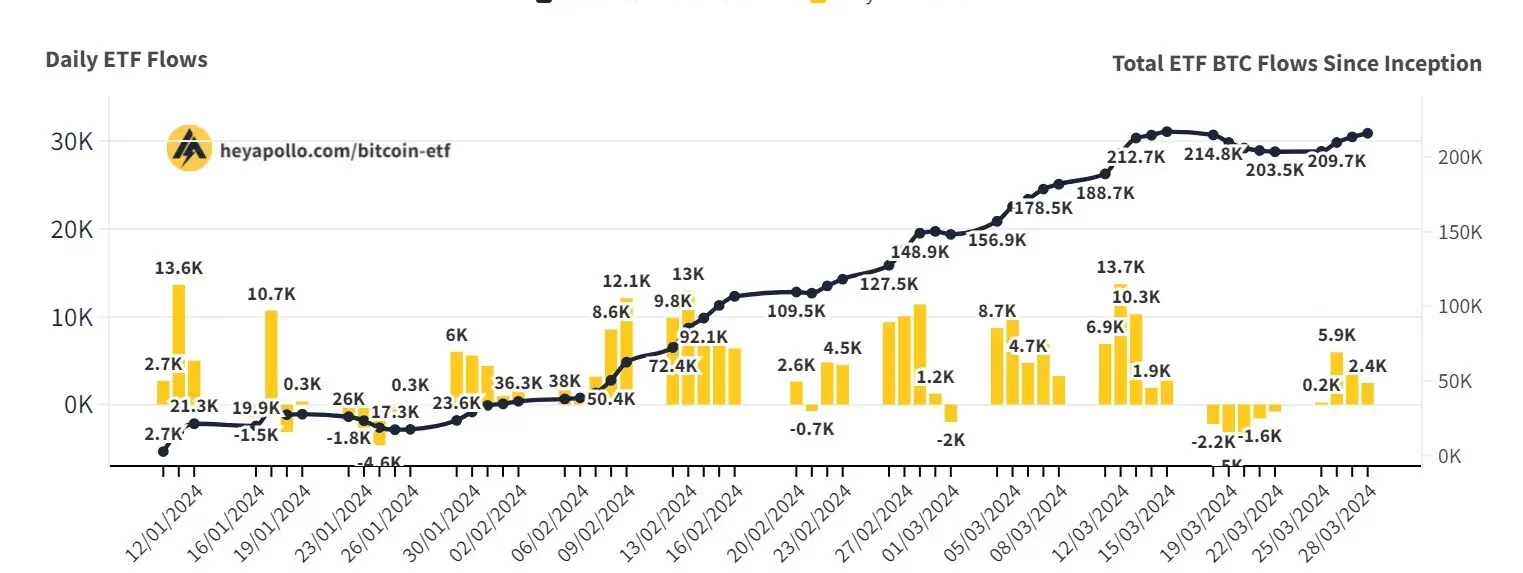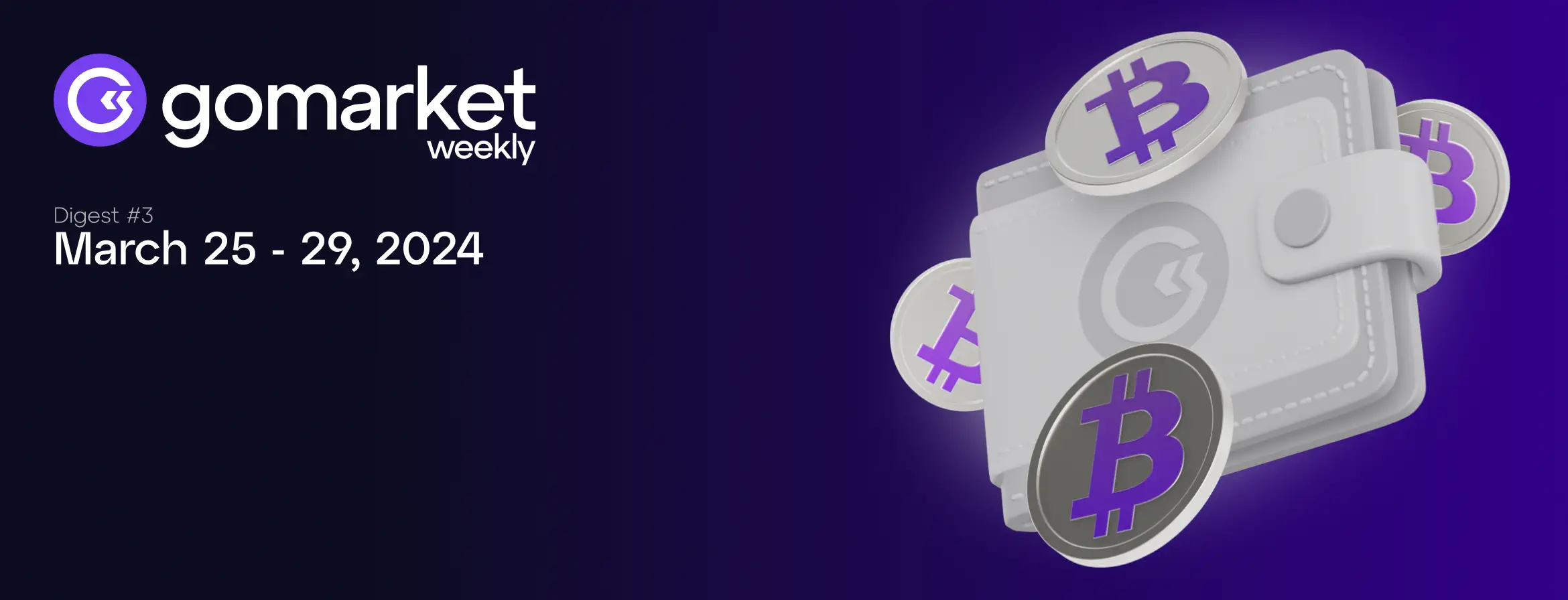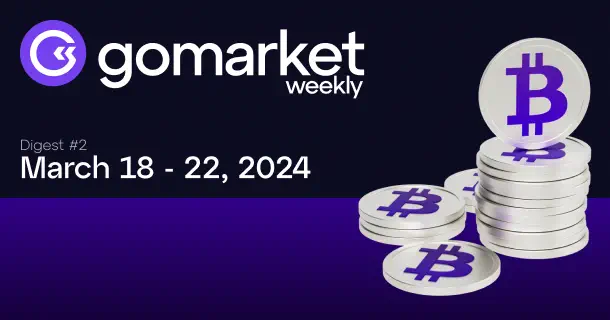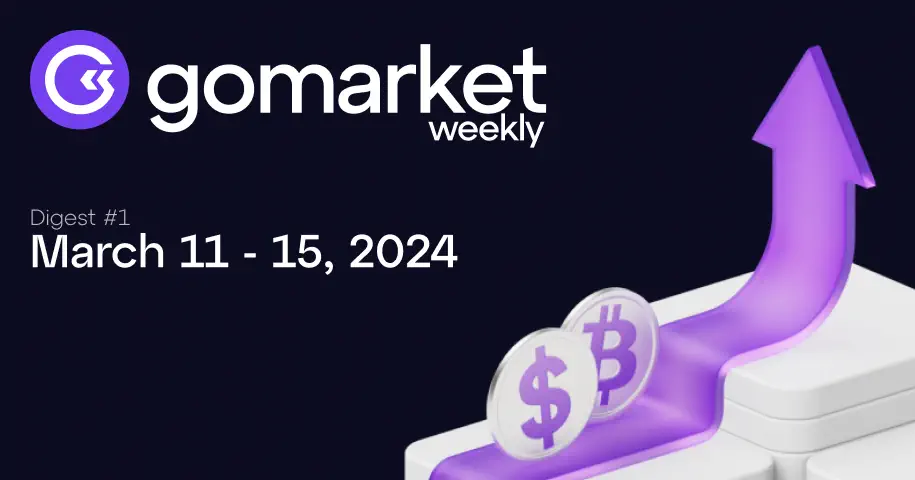Market Analysis with Mike Ermolaev
This week, we're hopping back into the ever-surprising world of cryptocurrency markets with our guide, Mike Ermolaev. You probably recognize his name by now—the head of editorial at Crypto Daily and the founder of Outset PR, Mike is piecing everything together for us in a way that's not only easy to grasp but also packed with insights anyone can appreciate.
So, here we are, delving deep into the heart of this week's market movements, all to bring a one-of-a-kind perspective exclusively for our GoMining community.
Weekly Bitcoin ETF Trends and Impacts: Analyzing Flows and Potential Liquidity Crisis
Over the past week, from March 22nd to March 28th, the chart shows fluctuating daily inflows into Bitcoin ETFs, with the total net flows to ETFs generally trending upward. The daily flows started with a net outflow of -2.2K Bitcoin on the 22nd, followed by a slight inflow of 0.2K Bitcoin on the 25th. The inflows then picked up significantly on the 26th with 5.9K BTC, then 3.8K BTC on the 27th, and ended the period with an inflow of 2.4K Bitcoin on the 28th.

Source: Heyapollo.com
Considering the total flows for each ETF fund for this period in US dollars (USD), IBIT experienced an inflow of $635.5 million, while FBTC saw an influx of $628.6 million. BITB received $114 million, and ARKB had an inflow of $307.3 million. BTCO’s inflows totaled $58.4 million, EZBC had $80.4 million, BRRR with $77.7 million, and HODL with $41.7 million. Meanwhile, BTCW’s inflow was minimal at $1.5 million. Conversely, GBTC faced a significant outflow, amounting to $1.13 billion, and DEFI saw a modest outflow of $14.7 million during this period.
But overall, despite the day-to-day variability, the ETFs have continued to add to their holdings.
You may naturally wonder why this significant capital infusion has paradoxically not translated into the expected upswing for Bitcoin's price.
Perhaps the answer lies in the following. According to the latest report of on-chain analytics platform CryptoQuant, we’re seeing signs of a brewing "sell-side liquidity crisis" in Bitcoin, where the demand for the number one cryptocurrency could dramatically outstrip supply. Due to surging demand, particularly from US spot Bitcoin ETFs, Bitcoin's available supply could dry up within the next 12 months. This situation is exacerbated as Bitcoin mined in 2010 has begun moving, suggesting old supplies are "waking up" amidst current market dynamics.
Bitcoin Bull Run Continues Amid ETF Interest and DeFi Growth; Ethereum ETF Approval on the Horizon
Still, the overall picture appears quite bright. The recent Grayscale report suggests Bitcoin is currently in the middle of a bull run, and it's all thanks to a boost from more investors putting money into Bitcoin ETFs and the rising total value locked away in DeFi. Indicators point to a strong market with rising stablecoin inflows and a shift in Bitcoin dominance as a precursor to broader altcoin rallies. Despite a quiet retail sentiment, institutional engagement via spot Bitcoin ETFs could sustain the bull market's momentum.
Furthermore, the recent Glassnode report reveals that a new all-time high (ATH) for Bitcoin at $73k was followed by a -15.4% pullback, with this price action aligning very closely with the prior 2018-21 cycle. There has been an increase in profit-taking – we're talking over $2.6 billion in profits as the market starts slowing down. This phase of distribution pressure and market correction is viewed as a natural part of Bitcoin's ongoing cycle.
An additional positive sign in the cryptocurrency market is the recent hopeful outlook for the Ethereum spot ETF approval by Grayscale Chief Legal Officer Craig Salm. He believes the green light will come in May, citing past productive discussions with the SEC around the Bitcoin spot ETF launch as a groundwork. According to him, the detailed consensus reached on operational aspects like the creation process, handling of assets, and custody, sets a precedent that negates the need for repeat discussions for Ethereum's ETF, signaling a smooth path ahead for its anticipated approval.
Miners' Dilemma and Eco-Lawsuit in Pennsylvania
Meanwhile, the recent Bitfinex research delves into the dynamics of independent and corporate miner types. It turns out, with big institutional investors jumping into the fray, competition has heated up like never before, potentially marginalizing smaller miners, thereby compromising the network's decentralization principle.
Additionally, the discussion on energy efficiency reflects growing expert concerns about the environmental impact of mining practices. A critical examination of sustainable mining solutions may be needed to address these challenges, according to the research.
This is illustrated by the case in Pennsylvania, where an environmental NGO, Save Carbon County, has taken legal action against Stronghold Digital Mining and the state for environmental damage due to crypto mining. It turns out Stronghold has been getting their energy from burning waste coal and even tires. And now they're in trouble because of all the carbon emissions this process generates. Here, we bump into a bit of an issue: the crypto world's thirst for energy doesn't always get along with the goal for keeping the planet green. In the middle of all this, GoMining is taking a different path by adopting energy-efficient mining practices that don't waste energy like there's no tomorrow, unlike what we see with much of the rest in this space.
Bankman-Fried's Historic Sentence & SEC's Legal Battles
Also, on the legal side of things, it seems like every day brings something new to talk about.
Wrapping up a saga that's kept us on the edge of our seats, Sam Bankman-Fried, formerly at the helm of FTX, Sam Bankman-Fried, has been handed down a hefty 25-year sentence for fraud and conspiracy, which resulted in billions lost. During his sentencing, Bankman-Fried offered an awkward apology for FTX's downfall, saying “sorry about what happened”. The prosecutor brushed aside his apology, clearly not buying what he was selling. He highlighted the cases of victims including an elderly couple who lost their life savings and a 23-year-old man from Morocco with a disabled father, both of whom had trusted FTX with their funds. The judge agreed, highlighting that Bankman-Fried wasn't just shooting in the dark; and was willing to take risks if the “expected value” calculation was in his favor, even if it involved extreme risks.
In addition to serving a 25-year sentence, Bankman-Fried will also have to forfeit $11 billion worth of assets. He retains the right to appeal the sentence but not to parole due to the federal nature of his crimes.
Meanwhile, in a recent legal escalation, the Securities and Exchange Commission (SEC) is seeking a substantial $2 billion penalty in its case against Ripple over its XRP sales to hedge funds and other sophisticated buyers deemed illegal by US District Court Judge Analisa Torres. Despite a partial legal victory in July, where Judge Torres differentiated between Ripple's sales to institutional investors (classified as securities) and those to the general public, the SEC's latest court brief accuses Ripple of failing to acknowledge its missteps fully. Next month, Ripple is expected to respond to the SEC's brief. Ripple's CEO Brad Garlinghouse is not holding back when it comes to the SEC, saying his team will continue to "expose the SEC for what they are.”
At the same time, the SEC isn't making life easy for Coinbase. A federal judge has just waved the green flag for the SEC's lawsuit against Coinbase to proceed. At the heart of this legal tangle, Coinbase is under fire for supposedly skipping out on the necessary paperwork. So, here we are again, circling back to that classic debate: Are crypto tokens really securities or not? For the SEC, this case is a big deal as they're working hard to fit US securities laws into the world of digital assets. So this precedent is likely going to shape how things go for the whole crypto world from here on out. Of course, things are moving fast in this space, and without proper financial regulation that's easy for everyone to see and understand, we're going to run into trouble.
Conclusion
At the moment, we're venturing into uncharted waters. Thankfully, Bitcoin's recent rally and the vibrant expansion of decentralized finance are lighting our way like beacons in the dark. The narrative is further enriched by positive trends of Bitcoin ETFs and the buzz around Ethereum's ETF awaiting approval. Beneath this surface of growth and anticipation lies a more contentious battleground of mining competition and pressing environmental concerns, juxtaposed against the backdrop of legal complexities involving key industry figures and entities. The next few chapters are going to really show us if the whole game-changing potential of crypto can stand up to being embraced by institutional investors, without humiliating minor players, while being eco-friendly, and following the rules.
Disclaimer: Please remember, the information discussed here isn't meant to be taken as investment advice. Conduct your own research and consult with financial advisors before making any investment decisions.







